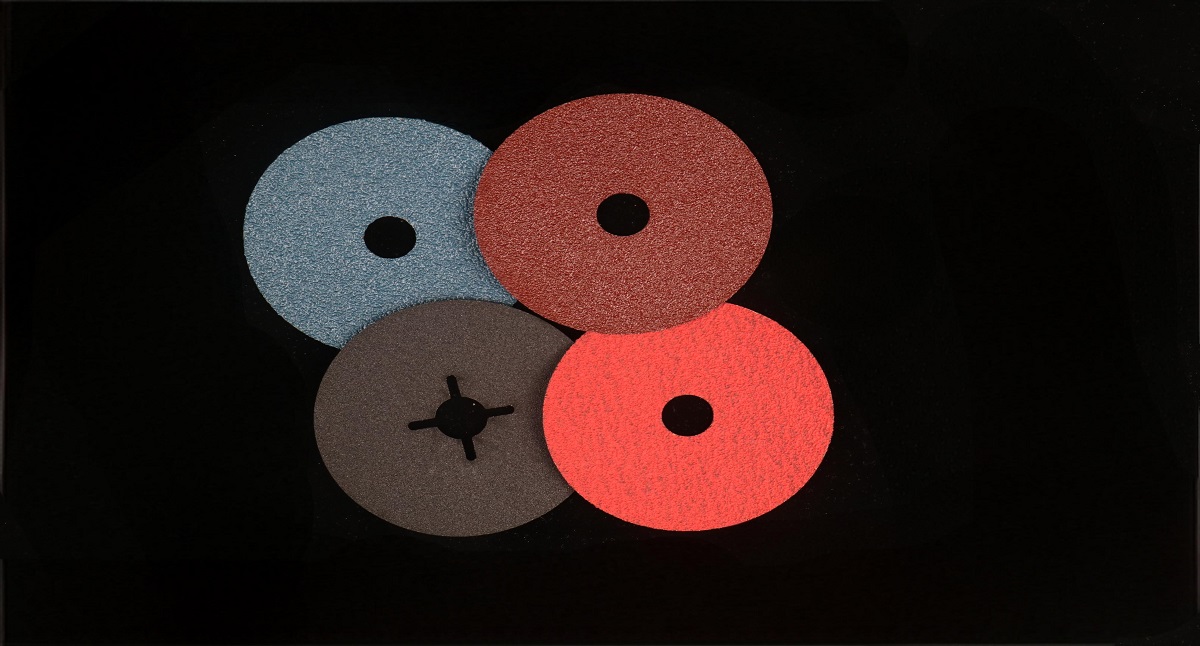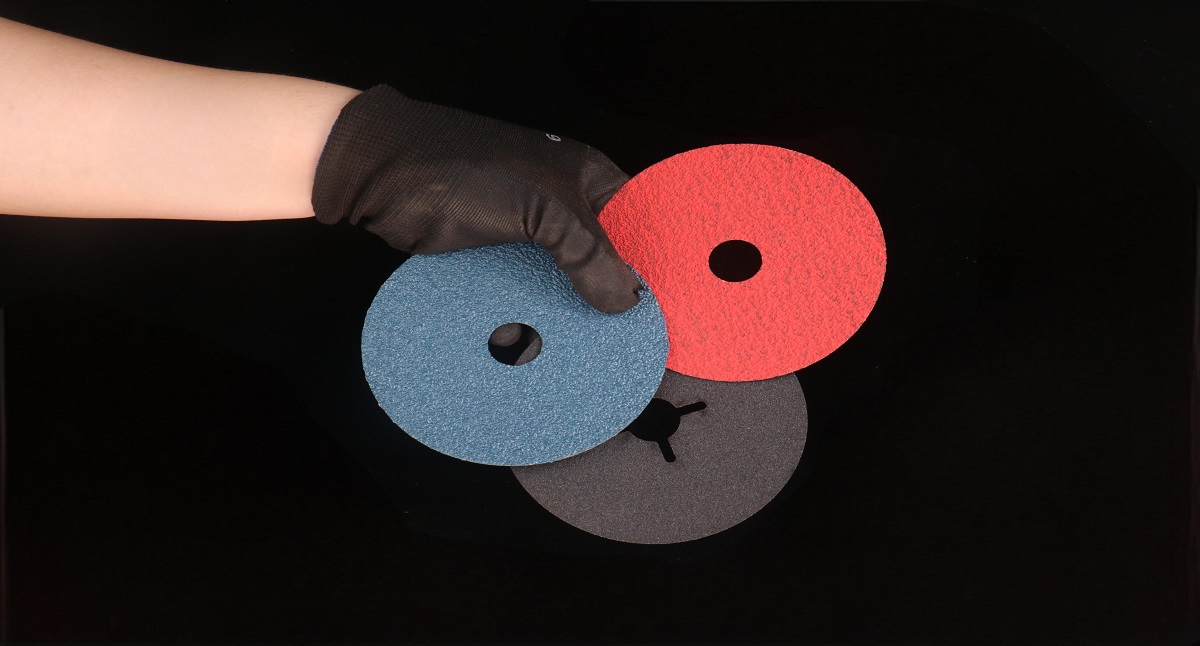Mounting a fiber disc to an angle grinder is a relatively simple task but one that requires precision and attention to detail for optimal safety and performance. Fiber discs are commonly used for a variety of grinding and sanding applications on metal, wood, and other materials. In this guide, we will walk you through the step-by-step process of properly mounting a fiber disc on an angle grinder, discussing the tools and safety precautions necessary to ensure efficient and safe usage.
What Is a Fiber Disc?
Before diving into the mounting process, it’s essential to understand what a fiber disc is. A fiber disc is an abrasive tool made of reinforced fiber and coated with resin-bonded abrasive grains. These discs are typically used with angle grinders for tasks such as grinding, deburring, and polishing. Fiber discs are known for their aggressive cutting ability and are often used in metalworking, welding, and fabrication industries.
Tools and Materials Required
To mount a fiber disc on an angle grinder, you will need the following items:
- Fiber disc (choose the correct grit size for your project)
- Backing pad (essential for supporting the fiber disc)
- Angle grinder (make sure it’s compatible with the disc size)
- Lock nut (to secure the disc in place)
- Wrench or spanner (usually provided with the angle grinder)
- Safety equipment (gloves, goggles, and hearing protection)
Step-by-Step Guide to Mounting a Fiber Disc on an Angle Grinder
Step 1: Ensure Your Angle Grinder Is Unplugged
Safety always comes first when working with power tools. Before you begin, make sure your angle grinder is turned off and unplugged from the power source. If you’re using a cordless model, remove the battery to eliminate any risk of accidental activation.
Step 2: Choose the Right Fiber Disc and Backing Pad
Fiber discs come in various grit sizes, each designed for specific applications. Coarse grits (24-60) are suitable for heavy material removal, while finer grits (80-120) are used for finishing. Ensure that the disc you are using is the correct size for your angle grinder (for example, 4.5-inch, 5-inch, or 7-inch discs). A fiber disc always requires a backing pad to provide the necessary support and stability during operation. The backing pad should match the size of the fiber disc and be compatible with your grinder.
Step 3: Position the Backing Pad on the Grinder
The backing pad is placed between the grinder and the fiber disc to give the disc the structural support needed during use. The pad is typically made of a durable material, such as hard plastic or rubber, which allows it to absorb the pressure applied when grinding. To attach it, follow these steps:
- Unscrew the lock nut from the spindle of the grinder using the wrench or spanner provided.
- Place the backing pad onto the spindle, ensuring that it sits flat on the surface of the grinder.
Make sure that the backing pad is centered and sits flush with the mounting area to prevent wobbling during operation.
Step 4: Place the Fiber Disc on the Backing Pad
Once the backing pad is properly positioned, it’s time to mount the fiber disc. Align the center hole of the fiber disc with the spindle of the angle grinder. Place the disc on top of the backing pad, ensuring it is seated properly. The disc should lie flat on the pad without any warping or curling at the edges.
Step 5: Secure the Lock Nut
The lock nut is essential for holding the fiber disc securely in place on the grinder. To attach the lock nut, follow these steps:
- Place the lock nut over the fiber disc, ensuring it sits snugly against the disc’s surface.
- Use the wrench or spanner to tighten the lock nut. Most angle grinders feature a spindle lock button, which will hold the spindle in place and prevent it from rotating while you tighten the nut. Press the spindle lock button and rotate the spindle until it locks in place.
Ensure that the lock nut is tightened firmly but avoid over-tightening, as this can damage the fiber disc or backing pad.
Step 6: Double-Check the Setup
Before powering up the angle grinder, it’s essential to double-check the setup:
- Ensure that the fiber disc is centered and properly seated on the backing pad.
- Check that the lock nut is secure and the spindle is locked in place.
- Inspect the disc for any signs of damage, such as cracks or deformities, which could make it unsafe to use.
Step 7: Attach the Power Source and Test
Once you’re confident that the fiber disc is mounted correctly, you can plug the angle grinder back into the power source (or reinsert the battery in the case of a cordless model). Test the grinder by powering it on and letting it run for a few seconds without applying it to the material. During this test run, listen for any unusual sounds and check for excessive vibration. If everything seems fine, the grinder is ready to use.
Safety Tips for Using Fiber Discs on an Angle Grinder
When using an angle grinder equipped with a fiber disc, following proper safety procedures is crucial to avoid accidents or injuries. Here are some key safety tips to keep in mind:
- Wear Protective Gear
Always wear protective gear, including safety goggles, ear protection, gloves, and a dust mask, especially when working with materials like metal or concrete that produce hazardous particles. - Inspect the Disc
Before every use, inspect the fiber disc for any signs of wear, damage, or warping. Using a damaged disc can result in failure during operation, potentially causing injury. - Use the Correct Disc
Always choose the correct fiber disc for the material you’re working on. Fiber discs are designed for specific applications, so using the wrong type of disc may lead to poor performance or even damage to the disc or grinder. - Maintain a Firm Grip
Always maintain a firm grip on the angle grinder and use both hands if possible. Angle grinders are powerful tools that can quickly get out of control if not handled properly. - Avoid Excessive Pressure
Do not apply excessive pressure while grinding. Let the tool do the work. Pushing too hard can cause the disc to wear out faster or lead to overheating, which could damage both the disc and the material. - Keep the Work Area Clear
Ensure that your work area is free from clutter and that there are no flammable materials nearby, especially if you’re working with metal, as sparks can be produced during grinding. - Use Guard Attachments
Many angle grinders come with safety guards to protect you from sparks and debris. Ensure that the guard is properly positioned before using the grinder.
Common Mistakes to Avoid When Mounting a Fiber Disc
- Using a Disc Without a Backing Pad
Some users make the mistake of mounting a fiber disc directly onto the grinder without a backing pad. This can result in poor disc performance and potential safety hazards. The backing pad is crucial for providing support and stability to the fiber disc. - Over-Tightening the Lock Nut
Over-tightening the lock nut can cause damage to the fiber disc and backing pad, leading to uneven wear or disc failure. Tighten the nut just enough to hold the disc securely in place. - Incorrect Disc Size
Always use a disc that is the correct size for your angle grinder. Using a disc that is too large or too small can result in poor performance and pose safety risks. - Neglecting to Inspect the Disc
Using a damaged or cracked fiber disc can lead to catastrophic failure during operation. Always inspect your disc before use to ensure it’s in good condition.
Conclusion
Mounting a fiber disc to an angle grinder is a straightforward process, but it requires careful attention to detail to ensure proper installation and safe operation. By following this guide, you can confidently mount your fiber disc and ensure it works efficiently for your grinding or sanding tasks. Always prioritize safety by wearing protective gear, inspecting your equipment, and using the right tools for the job. Properly mounted and maintained fiber discs can significantly enhance your grinding efficiency, making them an essential tool for a variety of applications in metalworking and fabrication.


